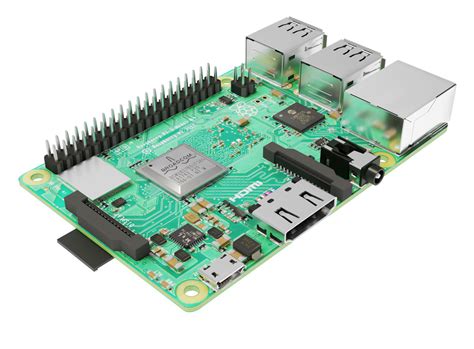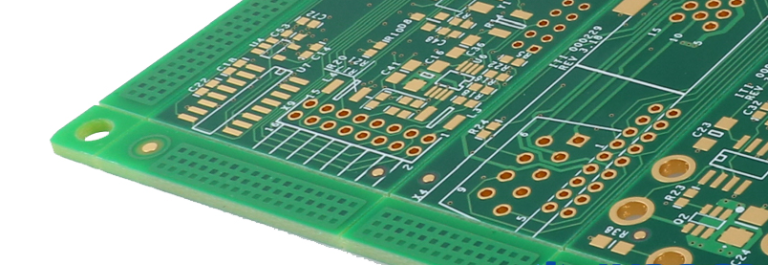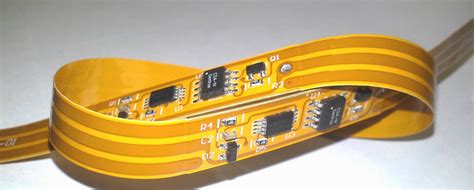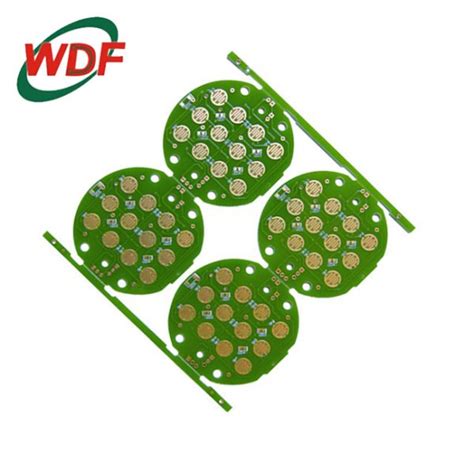Streamlined PCB Assembly Design for Enhanced Manufacturing Efficiency

Key Takeaways
Understanding the intricacies of PCB assembly is essential for manufacturers seeking to enhance efficiency and productivity. At the core of PCB assembly design are several key components and considerations that must be addressed. These include selecting appropriate materials, optimizing layout design, and ensuring precise component placement. Employing innovative strategies can significantly streamline PCBA processes; for instance, integrating automated assembly techniques helps in reducing manual errors and speeding up production times.
“Efficiency is not just about speed; it’s about doing things correctly the first time.” By prioritizing best practices in PCB assembly, manufacturers can minimize waste and improve overall output quality. Utilizing advanced technologies such as artificial intelligence and machine learning can transform traditional methods, fostering smarter decision-making that aligns with market demands.
In addition to these strategies, optimizing production techniques is crucial for reducing costs associated with PCBA. Techniques like just-in-time manufacturing and efficient inventory management can further enhance operational efficiency while ensuring that capital is effectively utilized.
As the industry evolves, staying abreast of future trends in PCB assembly design will allow manufacturers to adapt their practices and maintain a competitive edge in a dynamic market landscape. Embracing continuous improvement in all facets of PCB assembly will not only boost productivity but also position a company as a leader in manufacturing excellence.

Understanding PCB Assembly Design: Key Components and Considerations
In the realm of PCB assembly, several key components and considerations play a crucial role in determining the overall effectiveness and efficiency of the manufacturing process. The design of Printed Circuit Boards (PCBs) serves as the backbone for most electronic devices, making robust PCBA practices essential to optimize production outcomes. First, it is vital to incorporate design for manufacturing (DFM) principles early in the design stage, allowing for easier assembly and reducing potential errors. The choice of materials significantly impacts not just the final product quality but also influences cost efficiency during assembly. Moreover, effective layout and component placement expedite the soldering process, enhancing speed without sacrificing accuracy. Another critical factor is ensuring scalability within the design; as product demand fluctuates, the ability to adapt assembly processes can lead to significant savings. Key implications of these considerations include a reduction in time-to-market and improved product reliability, both paramount in today’s competitive landscape. By prioritizing these fundamental aspects of pcb assembly, manufacturers can achieve a more streamlined operation that meets increasing market demands effectively while minimizing costs.

Innovative Strategies for Streamlining PCB Assembly Processes
In today’s competitive landscape, optimizing PCB assembly processes has become essential for manufacturers aiming to enhance efficiency and reduce costs. One innovative strategy involves implementing lean manufacturing principles, which focus on eliminating waste in various stages of production. By closely analyzing workflows, companies can identify bottlenecks and reallocate resources to streamline operations. Furthermore, incorporating automation into the PCBA process allows for higher precision and consistency, significantly improving the overall quality of the finished product. This not only speeds up assembly time but also minimizes the likelihood of defects that can lead to costly rework. Additionally, utilizing advanced software tools for design and simulation enables engineers to predict potential challenges in the pcb assembly process before they arise, facilitating proactive solutions rather than reactive fixes. Ultimately, these strategies not only contribute to a more efficient production line but also enhance the adaptability of manufacturers in a rapidly evolving market environment.

Best Practices for Enhancing Manufacturing Efficiency in PCB Assembly
In the realm of PCB assembly, implementing best practices is crucial for achieving optimal manufacturing efficiency. One of the primary strategies is to focus on the design for manufacturability (DFM). By ensuring that designs are compatible with automated assembly processes, manufacturers can significantly reduce assembly time and potential errors. Regularly conducting design reviews can identify potential issues early in the development phase, thereby minimizing costly rework later on.
Another effective practice involves selective soldering technologies that enhance the precision of PCBA. This method allows for targeted solder application, reducing excess solder and improving joint reliability. Additionally, incorporating flexible assembly lines can accommodate varying production volumes, thus adapting to changing market demands without incurring significant downtime.
Utilizing real-time data analytics aids in monitoring production efficiency and identifying bottlenecks. This proactive approach enables manufacturers to make informed decisions that enhance overall productivity. Moreover, investing in training for personnel ensures that workers are adept at using modern assembly tools and technologies, thus streamlining processes further.
| Best Practice | Description |
|---|---|
| Design for Manufacturability (DFM) | Ensures designs are optimized for efficient assembly |
| Selective Soldering Technology | Improves precision and reduces solder waste |
| Flexible Assembly Lines | Adapts to varying production demands |
| Real-time Data Analytics | Monitors efficiency and identifies improvement areas |
| Training Programs | Enhances worker skills in modern assembly techniques |
By adopting these best practices within PCB assembly, manufacturers can achieve a notable enhancement in efficiency while simultaneously reducing production costs. The continuous evaluation and refinement of these methods will drive sustained improvements in the PCB industry.
The Role of Advanced Technologies in PCB Assembly Design
In the realm of PCB assembly, the integration of advanced technologies has revolutionized traditional practices, significantly enhancing efficiency and precision. Techniques such as surface mount technology (SMT) and pick-and-place automation streamline the assembly process, ensuring that components are placed accurately and rapidly on the printed circuit boards. Furthermore, the utilization of automated optical inspection (AOI) systems allows manufacturers to detect defects early in the production line, reducing waste and minimizing costly rework associated with flawed assemblies. As we embrace Industry 4.0, implementing smart manufacturing tools such as Internet of Things (IoT) devices facilitates real-time data analysis, enabling manufacturers to optimize workflows and predict maintenance needs proactively. The incorporation of these advanced technologies not only accelerates production timelines but also fosters a more adaptable manufacturing environment capable of responding to changing demands efficiently. Consequently, manufacturers can achieve a higher level of reliability in their PCBA processes while keeping costs under control, which is vital in today’s competitive market landscape.
Optimizing Production: Techniques to Reduce Costs in PCB Assembly
In the realm of PCB assembly, optimizing production is pivotal for achieving cost efficiency without compromising on quality. One effective technique is to implement a just-in-time (JIT) inventory system, which minimizes excess stock and reduces storage costs, thus streamlining the entire manufacturing process. Furthermore, adopting modular designs in PCBA can enhance repairability and testing efficiency, which leads to decreased labor costs during assembly. Employing automated assembly machinery, coupled with advanced programming software, allows for precision placement of components and reduces human error, thereby accelerating production rates. Additionally, conducting regular reviews of the supply chain for sourcing quality components at lower prices is a vital strategic move that can significantly cut costs in PCB assembly. Integrating feedback loops within the production process also fosters continuous improvement—by analyzing production data regularly, manufacturers can identify bottlenecks and eliminate inefficiencies in their PCB assembly processes. Ultimately, embracing these robust techniques facilitates sustainable cost reductions while simultaneously elevating the overall manufacturing efficiency of PCBA operations.

Case Studies: Successful PCB Assembly Design Implementations
Exploring real-world pcb assembly implementations reveals valuable insights into effective strategies that can significantly enhance manufacturing efficiency. One notable case involved a mid-sized electronics firm that adopted a lean manufacturing approach in their PCBA process. By minimizing waste through strategic layout redesign, they were able to streamline their workflows, resulting in a 30% reduction in assembly time. In another instance, a large-scale manufacturer integrated advanced automation technologies into their pcb assembly line, enhancing precision and reducing human error. This not only improved product quality but also led to a remarkable decrease in production costs. Furthermore, these case studies illustrate the importance of employing cross-functional teams during the design phase, as collaboration among engineering, production, and quality assurance personnel fosters innovative solutions that address potential design flaws early on. Emphasizing continuous improvement, these companies clearly showcase the effectiveness of adapting modern methodologies and technologies in creating efficient PCBA processes that stand up to competitive manufacturing demands.
Future Trends in PCB Assembly Design and Manufacturing Efficiency
As the landscape of electronics continues to evolve, the field of pcb assembly design is witnessing significant transformations aimed at improving manufacturing efficiency. The integration of advanced technologies such as automation, artificial intelligence, and machine learning is becoming increasingly prominent. These technologies facilitate faster inspection processes and enhance precision in assembly processes, thus helping to minimize errors that can lead to increased costs or delays. Additionally, the adoption of flexible manufacturing systems allows for more adaptable production environments that can swiftly switch between different types of pcba designs without extensive downtime.
Another noteworthy trend is the move towards sustainable practices within pcb assembly operations. Manufacturers are increasingly focused on reducing waste and optimizing resource utilization through innovative design methodologies and recyclable materials. This shift not only meets regulatory requirements but also appeals to environmentally conscious consumers.
Furthermore, with the rise of IoT devices and smart technology integration, there is a growing emphasis on designing pcba that support interconnected ecosystems. This necessitates a higher level of complexity in design but also opens up opportunities for enhanced functionality within smaller form factors. As these trends continue to shape the industry, companies that prioritize efficient, innovative pcb assembly design will likely lead in both market share and profitability, setting a benchmark for others to follow.
Conclusion
In summary, the journey towards optimized PCB assembly involves a blend of innovative strategies and the adoption of advanced technologies to ensure maximal efficiency. By focusing on the integration of streamlined processes, manufacturers can significantly enhance their PCBA operations. Implementing the best practices discussed throughout this exploration—such as modular design elements and efficient layout configurations—allows for a more cohesive workflow. As highlighted in case studies, successful PCB assembly projects benefitted immensely from thoughtful design considerations that prioritized both usability and manufacturability. Looking ahead, it is critical for stakeholders in the industry to remain vigilant about emerging trends that could further advance their production methodologies. Ultimately, investing in enhanced design practices not only reduces costs but also paves the way for higher-quality outcomes in PCBA, contributing to a robust and competitive manufacturing landscape.

FAQs
What is PCB assembly?
PCB assembly, often referred to as PCBA, is the process of creating a functional circuit board by soldering electronic components onto a printed circuit board (PCB).
Why is the design of PCB assembly important?
The design of pcb assembly is crucial as it ensures that the board functions correctly, reducing errors during manufacturing and enhancing overall product quality.
What are some common challenges in PCB assembly design?
Common challenges include optimizing the layout for electrical performance, minimizing production costs, and ensuring manufacturability while complying with industry standards.
How can advanced technologies improve PCB assembly processes?
Advanced technologies such as automation and robotics streamline pcb assembly processes, decreasing labor costs and reducing human error, ultimately leading to increased efficiency.
What best practices should be considered for effective PCB assembly design?
Best practices include focusing on simplicity in design to reduce component count, using standardized components where possible, and ensuring clear communication between electrical and mechanical teams.
How does optimizing production help reduce costs in PCB assembly?
Optimizing production through techniques like lean manufacturing can minimize waste, leading to lower operational costs and improved turnaround times in pcba projects.
For more detailed insights into enhancing your pcb assembly design, please click here: Andwin PCB Assembly.







